#nasasocial
Text
TWITTER RESTORED
Hi everyone, thanks for reporting the hack on my Twitter account. To my complete astonishment, restoration took only 24 business hours. That's amazing. Thanks to Twitter support and all the people who signal boosted the matter.
I still can't make the NASA Social event for the Space X launch because this mess and some business matters ate up my window of opportunity. I hope someone else out there has a wonderful time in my place, and maybe I'll get another chance. Thanks to everyone!
45 notes
·
View notes
Text
HOW DOES THE EXPANSION OF THE UNIVERSE MAKE OUTER SPACE A VACUUM??
Blog# 206
Saturday, July 2nd, 2022
Welcome back,
The vacuum of outer space is not caused by the expansion of the universe, but is caused by gravity. First of all, when we say outer space (the space outside the atmosphere of planets and stars) is a "vacuum" or is "empty", we really mean that outer space is nearly empty or almost a perfect vacuum. In reality, even the most remote spot of outer space has gas, dust, radiation, gravity, and a whole host of other things.
There is no such thing as truly empty space. If we tried to suck all the particles out of a certain volume, we could still never get it empty. There would still be things like vacuum fluctuations, gravity, and dark matter, which can't be sucked out. With that said, outer space is very close to empty compared to earth's atmosphere. Why?

Every particle of matter, no matter how small, exerts a gravitational attraction on all other particles of matter. For small bits of matter like a hydrogen atom and for large distances like we see on the astronomical scale, the force of gravity is very weak.
But it is not zero. Given enough time, gravity makes giant clouds of gas in space condense down despite the gravitational force being so weak. Soon after the Big Bang, the universe was filled with a nearly uniform soup of hydrogen and helium. Over billions of years, gravity pulled most of these gas atoms into stars. Inside the nuclear furnace of stars, hydrogen and helium were fused to form the heavier elements up to iron. Larger stars eventually died in an explosive supernova which created all the naturally occurring elements heavier than iron and spewed these heavier elements into space.

Over time, these heavier elements condensed down under gravity to form small clouds and rocks. In turn, the clouds and rocks gravitationally attracted each other to form asteroids, moons, and planets. Outer space is nearly empty because most of matter that used to be out there has literally fallen into an asteroid, planet, moon, or star under the influence of gravity.

The expansion of the universe only affects the distance between galaxies, and does not increase the distances between objects inside a galaxy. Atoms in your body, creatures on earth, planets in a solar system, and solar systems in a galaxy are all far too strongly bound by gravity and electromagnetism to be affected by the expansion of the universe. As a result, the expansion of the universe cannot explain the relative emptiness of the space inside a galaxy.
Originally published on www.wtamu.edu
COMING UP!!
(Wednesday, July 6th, 2022)
"WHAT IS MICROGRAVITY??"
#astrophysics#Astronomy#astrophotography#outer space#spacecraft#spaceX#Sunspot#atmosphere#space#Parallel Universe#white universe#alternate universe#universe#nasasocial#strange matter#Dark Matter#antimatter#gamma rays#Mars#astronomy#parallel universe#astronomylover
55 notes
·
View notes
Photo
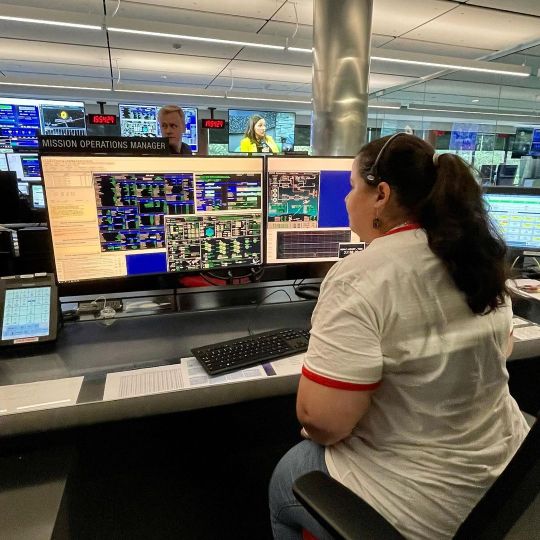
Trust me, I’m an astronomer ✨#nasasocial #unfoldtheuniverse (at Space Telescope Science Institute) https://www.instagram.com/p/Cf96IpjOQmd/?igshid=NGJjMDIxMWI=
2 notes
·
View notes
Photo
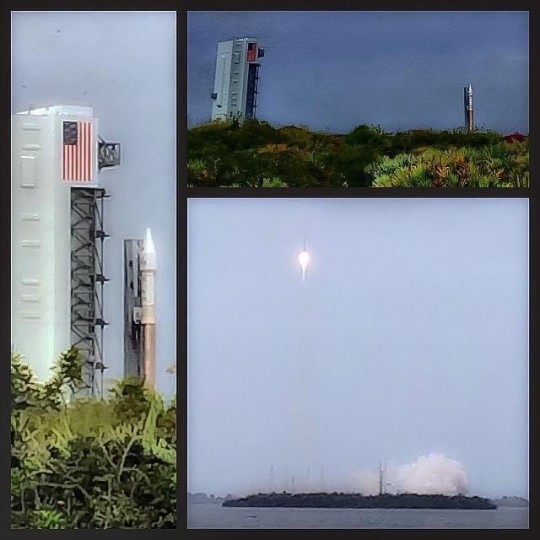
Nine years ago today I was honored to join #NASASocial at @NASAKennedy to watch @ULAlaunch launch @MAVEN2Mars & begin an incredible journey of discovery of the red planet. Still one of the most incredible things I've ever personally witnessed. #NASA #NASASocial #MAVEN https://www.instagram.com/p/ClITSHUuAsQ/?igshid=NGJjMDIxMWI=
0 notes
Photo

Aaand…Part 2 of my #nasasocial experience has landed! (see what I did there? 😄) click the link in my bio to see the folks I met and the things we saw. I encourage you to apply to attend a future event! #DARTMission #planetarydefense https://www.instagram.com/p/CjTKZz0ubGx/?igshid=NGJjMDIxMWI=
0 notes
Text
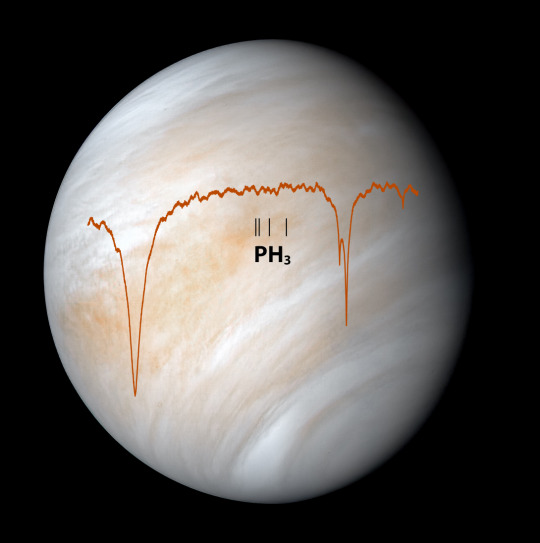
^The spectral data from SOFIA overlain atop this image of Venus from NASA’s Mariner 10 spacecraft is what the researchers observed in their study, showing the intensity of light from Venus at different wavelengths. If a significant amount of phosphine were present in Venus’s atmosphere, there would be dips in the graph at the four locations labeled “PH3,” similar to but less pronounced than those seen on the two ends. Credit: Venus: NASA/JPL-Caltech; Spectra: Cordiner et al.
No Phosphine on Venus, According to SOFIA
Venus is considered Earth’s twin in many ways, but, thanks to the Stratospheric Observatory for Infrared Astronomy (SOFIA), one difference now seems clearer: Unlike Earth, Venus does not have any obvious phosphine.
Phosphine is a gas found in Earth’s atmosphere, but the announcement of phosphine discovered above Venus’s clouds made headlines in 2020. The reason was its potential as a biomarker. In other words, phosphine could be an indicator of life. Though common in the atmospheres of gas planets like Jupiter and Saturn, phosphine on Earth is associated with biology. Here, it’s formed by decaying organic matter in bogs, swamps, and marshes.
“Phosphine is a relatively simple chemical compound — it’s just a phosphorus atom with three hydrogens — so you would think that would be fairly easy to produce. But on Venus, it’s not obvious how it could be made,” said Martin Cordiner, a researcher in astrochemistry and planetary science at NASA’s Goddard Space Flight Center in Greenbelt, Maryland.
There may be other potential ways to form phosphine on a rocky planet, like through lightning or volcanic activity, but none of these apply if there simply isn’t any phosphine on Venus. And according to SOFIA, there isn’t.
Following the 2020 study, a number of different telescopes conducted follow-up observations to confirm or refute the finding. Cordiner and his team followed suit, using SOFIA in their search.
Further reading: https://blogs.nasa.gov/sofia/2022/11/29/no-phosphine-on-venus-according-to-sofia/?utm_source=FBPAGE&utm_medium=SOFIA+Stratospheric+Observatory+for+Infrared+Astronomy&utm_campaign=NASASocial&linkId=191686701&fbclid=IwAR0Cp8tFeKiF6jQFemiMxPde05xFBx5bemPCymr9Cj4za4iC17_6QWg1f9s
13 notes
·
View notes
Link
From left, NASA astronauts Suni Williams and Barry “Butch” Wilmore, Boeing Crew Flight Test (CFT) pilot and commander, respectively, exit the Astronaut Crew Quarters at NASA’s Kennedy Space Center in Florida during a crew validation test on Oct. 18, 2022. The astronauts, with assistance from the Boeing team, successfully completed the validation test during which they suited up and tested out the pressurized crew module to ensure seat fit, suit functionality, cabin temperature, audio system, and day of launch operations.NASA/Kim Shiflett Digital content creators are invited to register to attend the launch of NASA’s Boeing Crew Flight Test (CFT) mission to the International Space Station. The mission will be the first crewed launch of Boeing’s Starliner spacecraft as part of NASA’s Commercial Crew Program. Starliner will launch atop a United Launch Alliance Atlas V rocket, carrying NASA astronauts Barry “Butch” Wilmore and Suni Williams to the orbiting laboratory for a stay of about one to two weeks. Liftoff is targeted for mid-April 2024 from Cape Canaveral Space Force Station’s Space Launch Complex-41 in Florida. If your passion is to communicate and engage the world online, then this is the event for you! Seize the opportunity to see and share the #Starliner mission launch. A maximum of 50 social media users will be selected to attend this two-day event and will be given access similar to news media. NASA Social participants will have the opportunity to: View a crewed launch of the United Launch Alliance Atlas V rocket and Starliner spacecraft. Tour NASA facilities at Kennedy Space Center. Meet and interact with CFT subject matter experts. Meet fellow space enthusiasts who are active on social media. NASA Social registration for the CFT launch opens on Wednesday, Feb. 21, and the deadline to apply is at 3 p.m. EST Tuesday, Feb. 27. All social applications will be considered on a case-by-case basis. APPLY NOW Do I need to have a social media account to register? Yes. This event is designed for people who: Actively use multiple social networking platforms and tools to disseminate information to a unique audience. Regularly produce new content that features multimedia elements. Have the potential to reach a large number of people using digital platforms, or reach a unique audience, separate and distinctive from traditional news media and/or NASA audiences. Must have an established history of posting content on social media platforms. Have previous postings that are highly visible, respected and widely recognized. Users on all social networks are encouraged to use the hashtag #NASASocial and #Starliner. Updates and information about the event will be shared on X via @NASASocial and @NASAKennedy, and via posts to Facebook and Instagram. How do I register? Registration for this event opens Wednesday, Feb. 21, and closes at 3 p.m. EST on Tuesday, Feb. 27. Registration is for one person only (you) and is non-transferable. Each individual wishing to attend must register separately. Each application will be considered on a case-by-case basis. Can I register if I am not a U.S. citizen? Because of the security deadlines, registration is limited to U.S. citizens. If you have a valid permanent resident card, you will be processed as a U.S. citizen. When will I know if I am selected? After registrations have been received and processed, an email with confirmation information and additional instructions will be sent to those selected. We expect to send the acceptance notifications by March 1. What are NASA Social credentials? All social applications will be considered on a case-by-case basis. Those chosen must prove through the registration process they meet specific engagement criteria. If you do not make the registration list for this NASA Social, you still can attend the launch offsite and participate in the conversation online. Find out about ways to experience a launch here. What are the registration requirements? Registration indicates your intent to travel to NASA’s Kennedy Space Center in Florida and attend the two-day event in person. You are responsible for your own expenses for travel, accommodations, food, and other amenities. Some events and participants scheduled to appear at the event are subject to change without notice. NASA is not responsible for loss or damage incurred as a result of attending. NASA, moreover, is not responsible for loss or damage incurred if the event is cancelled with limited or no notice. Please plan accordingly. Kennedy is a government facility. Those who are selected will need to complete an additional registration step to receive clearance to enter the secure areas. IMPORTANT: To be admitted, you will need to provide two forms of unexpired government-issued identification; one must be a photo ID and match the name provided on the registration. Those without proper identification cannot be admitted. For a complete list of acceptable forms of ID, please visit: NASA Credentialing Identification Requirements. All registrants must be at least 18 years old. What if the launch date changes? Many different factors can cause a scheduled launch date to change multiple times. If the launch date changes, NASA may adjust the date of the NASA Social accordingly to coincide with the new target launch date. NASA will notify registrants of any changes by email. If the launch is postponed, attendees will be invited to attend a later launch date. NASA cannot accommodate attendees for delays beyond 72 hours. NASA Social attendees are responsible for any additional costs they incur related to any launch delay. We strongly encourage participants to make travel arrangements that are refundable and/or flexible. What if I cannot come to the Kennedy Space Center? If you cannot come to the Kennedy Space Center and attend in person, you should not register for the NASA Social. You can follow the conversation online using #NASASocial. You can watch the launch on NASA Television or www.nasa.gov/nasatv/. NASA will provide regular launch and mission updates on @NASA, @NASAKennedy, and @Commercial_Crew. If you cannot make this NASA Social, don’t worry; NASA is planning many other Socials in the near future at various locations! Check back here for updates.
1 note
·
View note
Text

#fresh memes#memes#funny#haha#funny memes#lol#dank memes#omg#science#nasa breaking news#nasa photos#nasasocial#planet#study space
496 notes
·
View notes
Text
Espectacular
#nasa🚀#space photography#nasa#spacex#like4like#likeforfollow#followforlike#space news#share#100 likes#spaceship#nasa 2020#ayurvedic nasal drops#nasasocial#social justice#espacio#espectadores#please share#artists on tumblr
45 notes
·
View notes
Text
Sometimes failule is an option. If you are not failing, you're not innovating enough.
#bts#bts jimin#emotions#real story#bts army#bts jin#black lives fucking matter#black lives are worthy#bts smut#music#black tumblr#tumblr pics#tumblr quotes#timblr#tumblrpost#artists on tumblr#little space#spacex#nasa#nasasocial#moon#spaceship#galaxy
25 notes
·
View notes
Photo

[In over-tired-new-parent voice]
BUT WE’RE CALLING IT PERCY
168 notes
·
View notes
Text
NASA Launch Event and I'll Be There!
So excited to be a part of the @NASASocial team for the launch of NASA’s SpaceX Crew-6 at Kennedy Space Center for the pre-launch and launch event from February 23-26.
I'll be live reporting along with other space enthusiasts! @NASA @NASAKennedy @Commercial_Crew

37 notes
·
View notes
Text
A 'GALAXY' IS UNMASKED AS A PULSAR!!"
Blog# 190
Saturday, May 7th, 2022
Welcome back,
Astronomers have confirmed that an object they thought was a distant galaxy is actually the brightest extra-galactic pulsar ever seen. The team made the discovery using a technique that blocks a particular type of polarized light, similar to polarized sunglasses, which could be used to spy more ‘hidden’ pulsars.
Pulsars are highly magnetized spinning neutron stars that form from the collapsed remnants of exploded stars. As pulsars spin, they release a stream of radio waves from their poles — a ‘pulse’ that can be detected using radio telescopes.

Astronomers use pulsars to test theories of gravity and to look for evidence of gravitational waves.
The new pulsar, called PSR J0523−7125, is about 50,000 parsecs from Earth, in the Large Magellanic Cloud (LMC), and is quite different from most known pulsars. Its pulse is very wide — more than twice the size of other known pulsars in the LMC, and it is exceptionally ‘bright’ on the radio spectrum, says Yuanming Wang, an astrophysicist at Australia’s Commonwealth Scientific and Industrial Research Organization in Canberra.

Wang and the team say the pulsar is ten times brighter than any other pulsar found outside the Milky Way. Their study is published in The Astrophysical Journal today.
“Because of its unusual properties, this pulsar was missed by previous studies, despite how bright it is,” said co-author, Tara Murphy, a radio astronomer at the University of Sydney in Australia, in a press release.
Pulsars are typically identified from their faint pulse, flickering periodically. But in the case of PSR J0523−7125, its pulse is so wide and bright, that it didn’t fit the typical profile of a pulsar and was dismissed as a galaxy.
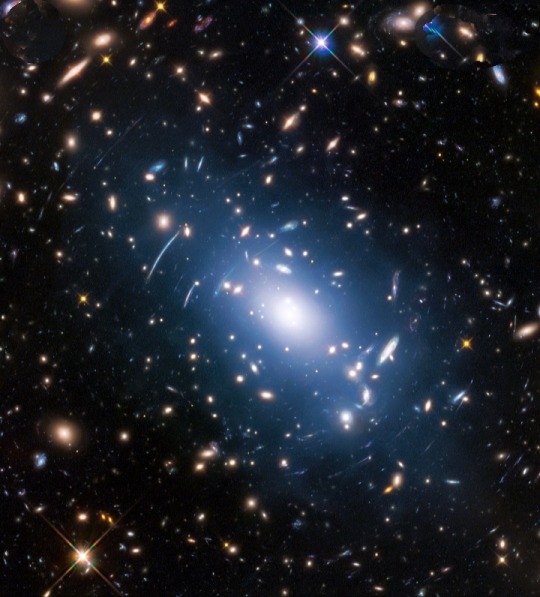
Wang and an international team of astronomers first suspected the object might be a pulsar in data from the Variables and Slow Transients survey, conducted using the Australian Square Kilometre Array Pathfinder (ASKAP) telescope in Western Australia. The survey looks at a large amount of sky for highly variable radio wave sources, and collects circular polarization, among other data.
Emissions from pulsars are often highly polarized, and some of them oscillate in a circular way. Few space objects are polarized like this, which makes them stand out.

Using a computer programme, the team was able to block out wavelengths of light that were not circularly polarized, revealing the rare type of pulsar. Other telescopes, including the MeerKAT radio-astronomy telescope in South Africa, confirmed their finding.
“We should expect to find more pulsars using this technique. This is the first time we have been able to search for a pulsar’s polarization in a systematic and routine way,” said Murphy.
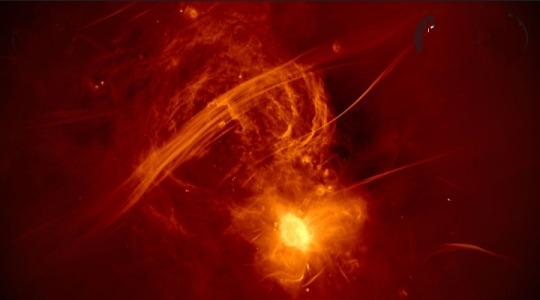
Yvette Cendes, a radio astronomer at the Harvard-Smithsonian Center for Astrophysics in Cambridge, Massachusetts, says that radio astronomy hasn’t been as effective as optical astronomy at finding ‘transient’ objects — space objects like pulsars that come in and out of view. “Surveys like VAST are changing that,” she says.
“But just because you find a transient [object] doesn’t mean it’s easy to figure out what it is,” she says. Polarization data helped to narrow down the source of the object, which suggests the technique has the potential to identify other transients in the future, she says.

Although other telescopes are collecting polarization data, there have only been a few large-scale radio surveys using the circular polarization technique. In March, researchers using data from the Low-Frequency Array (LOFAR) telescope in the Netherlands found two new pulsars using the technique, which they detailed in a preprint posted on arXiv.
Originally published on https://www.nature.com
COMING UP!!
(Wednesday, May 11th, 2022)
“IS OUR UNIVERSE IN A BLACK HOLE??”
#astrophotography#astrophysics#Astronomy#spaceX#spacecraft#outer space#space#alternate universe#Parallel Universe#white universe#universe#NASA#antimatter#strange matter#Dark Matter#black holes#mercury black#blackholes#nasasocial#The Sun#string theory#heat death#earth#astronomy#astronomylover#parallel universe
48 notes
·
View notes
Photo

Compare views of the Southern Ring nebula and its pair of stars by Webb’s NIRCam (L) & MIRI (R) instruments. The dimmer, dying star is expelling gas and dust that Webb sees through in unprecedented detail: nasa.gov/webbfirstimage… #UnfoldTheUniverse #JWST #NASASocial #SouthernRingNebula https://www.instagram.com/p/Cf6qBSPumhA/?igshid=NGJjMDIxMWI=
2 notes
·
View notes
Text
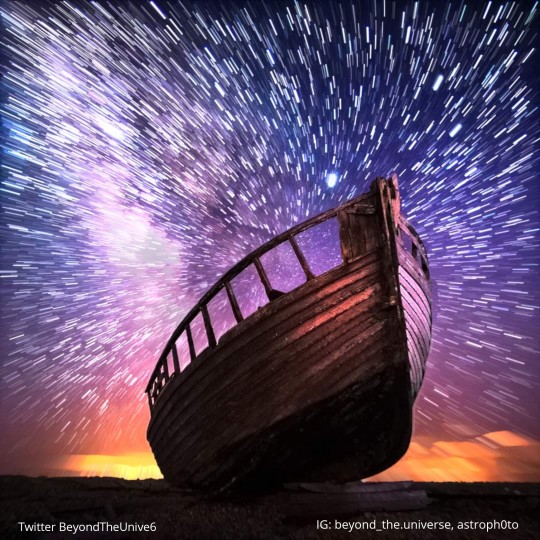
Edited by me
#space#universe#nasa#astronomy#nebula#outer space#space news#cosmos#planets#constellation#astrophotography#nasasocial#nasa gov#scientific fact
11 notes
·
View notes
Photo

DART Mission NASA’s 1st planetary defense test mission! Want to learn a little more about this trailblazing mission? Let’s go! Make sure to follow my coverage on this upcoming event Monday, 9/26. I’ll be touring @johnshopkinsapl and will be there for the the spacecrafts encounter with the asteroid that evening. Make sure to follow my adventures on my IG stories! In the meantime, here is some helpful information about the mission. Enjoy! The Double Asteroid Redirection Test (DART) Developed and led for NASA by the Johns Hopkins Applied Physics Laboratory (APL) in Laurel, Maryland, DART will demonstrate the planetary defense technique known as kinetic impact. The DART spacecraft, which launched on November 24, 2021, will slam into an asteroid and shift its orbit, taking a critical step in demonstrating ways to protect our planet from a potentially hazardous impact. DART’s target is a binary asteroid system consisting of Didymos (Greek for “twin”), about a half-mile across, and its smaller companion called Dimorphos (Greek for “two forms”), about 530 feet across. DART will use an autonomous targeting system to aim itself at Dimorphos. The spacecraft, roughly the size of a small car, will strike the smaller body at about 4 miles per second on September 26, 2022. Telescopes on Earth will observe the asteroid system and measure the change in Dimorphos’ orbit around Didymos. A ride-along CubeSat named LICIACube, built by the Italian Space Agency, will separate from DART before impact to observe the collision. Info source: Johns Hopkins APL #NASASocial #DARTmission #PlanetaryDefender #PlanetaryDefense https://www.instagram.com/p/CiveXYWplvj/?igshid=NGJjMDIxMWI=
0 notes